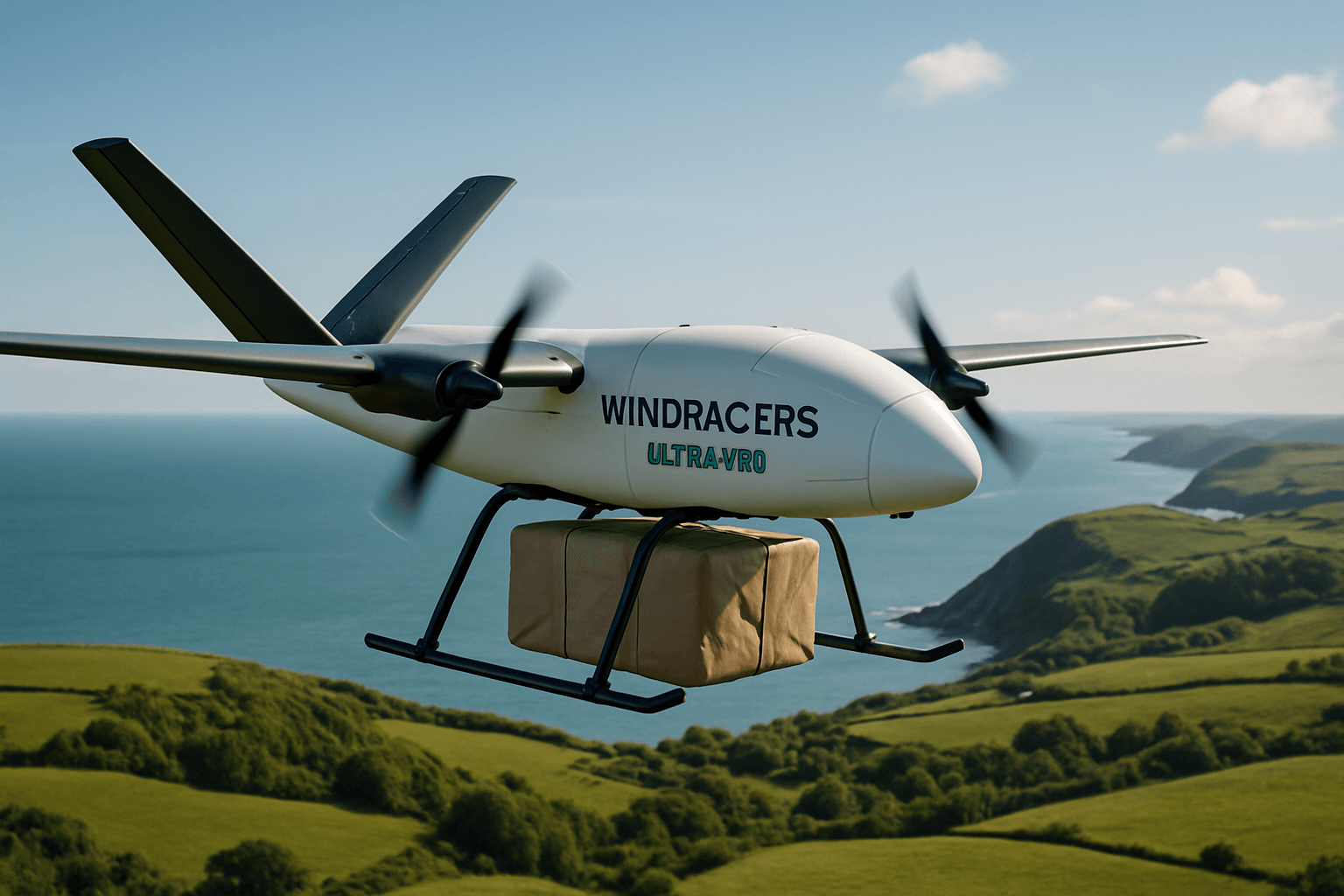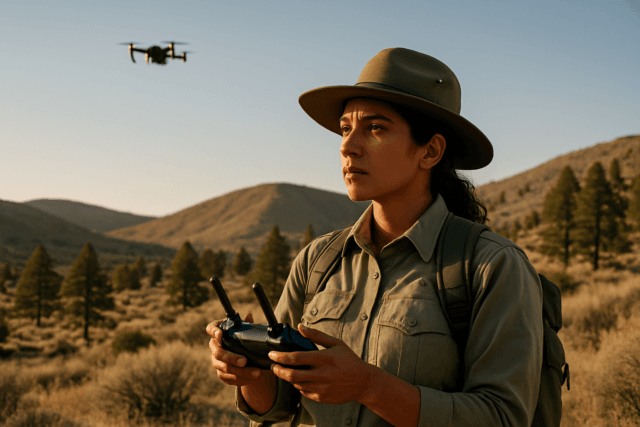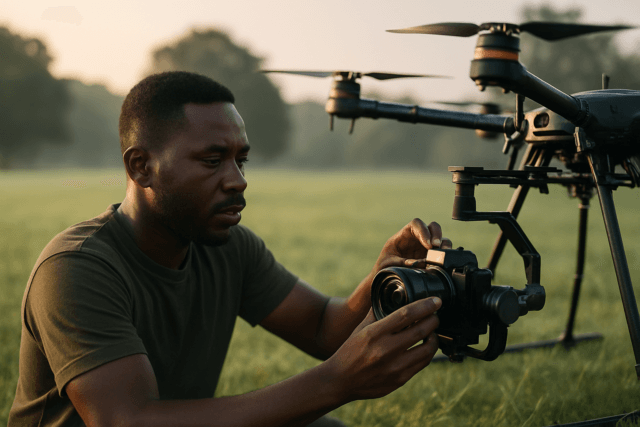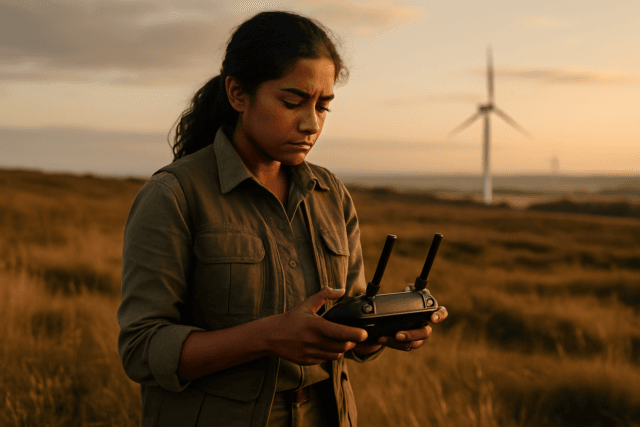UK-based Windracers has recently unveiled its latest innovation in autonomous cargo drones, the Ultra MkII. This upgraded version of their Ultra UAV boasts increased payload capacity and improved performance, largely attributed to its adoption of a V-tail design. The Ultra MkII is designed to revolutionize middle-mile logistics and has already garnered attention from organizations involved in humanitarian aid, scientific research, and defense.
What’s New with the Windracers Ultra MkII?
The Ultra MkII showcases several key enhancements over its predecessor:
- Increased Payload: The maximum payload capacity has increased by 50%, from 100kg to 150kg.
- More Powerful Engines: It features two customized 50hp Hirth F23 engines, doubling the power output compared to the previous Briggs & Stratton engines.
- V-Tail Design: A notable change is the inverted V-tail configuration, replacing the conventional vertical and horizontal tail.
- Reduced Fuel Consumption: Despite the more powerful engines, the Ultra MkII achieves a reduction in operational fuel burn per kilo carried due to the increased payload and lower-drag design.
- Improved Performance: The enhanced design is expected to improve crosswind performance beyond the MkI’s 20kt limit.
- Simplified Production: Around 80 improvements were made to the design, with 30 specifically aimed at enhancing ease of production and reassembly.
- Increased Take-off Weight: The maximum take-off weight has increased to 510kg (1,130lb) from 400kg.
The V-Tail Advantage: Why Windracers Made the Switch
The V-tail, also known as a butterfly tail, is an unconventional design that replaces the traditional vertical and horizontal tail surfaces with two surfaces set in a V-shaped configuration. Each surface features a ruddervator, which combines the functions of both a rudder and an elevator.
Here’s a breakdown of the potential benefits of using a V-tail on the Windracers Ultra MkII:
- Reduced Drag: Theoretically, a V-tail can reduce both wetted and frontal area, leading to less drag compared to a conventional tail. The elimination of one intersection between surfaces further reduces interference drag.
- Weight Savings: The V-tail is “lower cost and lower mass” with “fewer parts,” making it easier to assemble and transport.
- Improved Ground Effect: V-tails are less exposed to ground effect, which means they don’t suffer the same loss of elevator effectiveness during landing and takeoff as conventional horizontal tails.
- Enhanced Control: V-tail geometry limits the aerodynamic forces on the control surfaces during a spin, providing some resistance to rudder lock.
- Stealth Characteristics: In military aircraft, V-tails can reduce the number of right angles on an aircraft, improving its stealth capabilities.
- Manufacturing Benefits: A V-tail has two panels instead of three in a conventional tail, which can simplify manufacturing.
- Crosswind Performance: The new V-tail is expected to improve crosswind performance compared to the previous model.
Potential Drawbacks of V-Tails
While V-tails offer several advantages, they also come with potential drawbacks:
- Structural Disadvantages: V-tails lack a continuous carry-through structure like that of a conventional horizontal stabilizer, which can make the structure heavier.
- Flutter: V-tails are more prone to flutter, which is a dangerous aeroelastic instability.
- Dutch Roll: Aircraft with V-tails can be more prone to Dutch roll, a coupled yawing and rolling oscillation.
- Control Complexity: V-tails require a more complex control system to actuate the ruddervators in unison.
- Adverse Roll: V-tails can cause adverse roll, a tendency for the aircraft to roll in the opposite direction of the intended turn.
Windracers Ultra MkII: Applications Across Industries
The Windracers Ultra MkII is designed for a wide range of applications:
- Middle-Mile Logistics: The Ultra MkII is designed to improve the efficiency and reduce the cost of middle-mile logistics, which involves journeys of around 27-270 nautical miles.
- Humanitarian Aid: Windracers’ original mission was to reduce the cost of delivering humanitarian aid to remote communities. The Ultra MkII can transport essential supplies to hard-to-reach areas quickly and safely.
- Defense: The Ultra MkII can be used for intelligence, surveillance, and reconnaissance (ISR) missions, as well as resupply operations.
- Scientific Research: The Ultra MkII can carry scientific payloads to collect data in extreme environments, such as Antarctica.
- Mail and Parcel Delivery: The Ultra MkII can be used for mail and parcel delivery services, particularly in remote or difficult-to-reach areas.
- Medical Assistance: The Ultra MkII can transport medical supplies and equipment to areas in need.
- Environmental Protection: The Ultra MkII can be used for environmental monitoring and conservation efforts.
Regulatory Landscape for Drones in the UK
Operating drones in the UK is subject to regulations set by the Civil Aviation Authority (CAA). Here’s a general overview of the key requirements as of 2025:
- Registration: Operators of drones weighing 250g or more, or any drone with a camera (unless it’s classified as a toy), must register with the CAA and obtain an Operator ID.
- Flyer ID: Anyone flying a drone weighing over 250g must pass an online theory test and obtain a Flyer ID.
- Height Limit: Drones cannot be flown higher than 400 feet (120 meters).
- Visual Line of Sight: Operators must maintain a visual line of sight with their drone at all times.
- Restricted Airspace: Permission is required before flying in restricted airspace.
- Insurance: Insurance is required for drones used for commercial purposes or weighing over 20kg.
- Distance from People and Built-up Areas: Depending on the category of drone, operators may need to maintain a minimum distance from people and built-up areas.
- CAA Permission: Commercial drone operators must possess a CAA permission document, especially when flying in urban areas or near large crowds.
Note: Drone regulations are subject to change. It’s crucial to consult the latest guidance from the CAA for the most up-to-date information.
Windracers’ Vision for the Future
Windracers aims to make the Ultra MkII a cost-effective and dependable solution for various industries. The company’s goals include reducing manufacturing costs, increasing the longevity of the platform, and achieving a high level of autonomy. Windracers also intends to increase production capacity to one Ultra airframe per day at their facility in Fareham, UK. By focusing on low-cost solutions and building trust through reliable performance, Windracers hopes to revolutionize the logistics and transportation industries.





